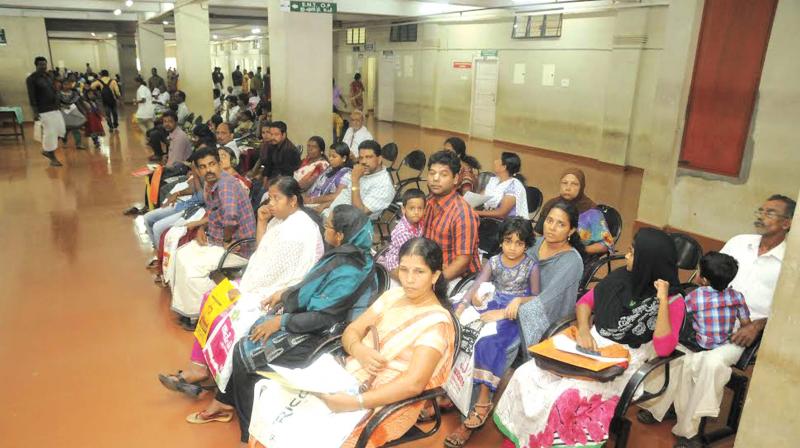AIIMS model online system to end long queues soon

THIRUVANANTHAPURAM: With the government planning to introduce online registration for various Out Patient departments, the patients’ ordeal of waiting in long queues for hours at the Trivandrum Medical College might come to an end soon. The plan is to put in place the online registration system being implemented at the premier All India Institute of Medical Science (AIIMS) Delhi where patients can take appointments online. Every day close to 3,000 patients visit the MCH and over 10,000 people accompany them.
“We have constituted a high level committee to study in detail the requirements needed to launch the online system. We are studying the daily functioning of OPDs attached to different departments. At the moment we have 38 OP wings of different departments functioning simultaneously,” said Trivandrum Medical College Principal Dr Thomas Mathew. He said the MCH also had plans to link the online OP registration with the state government’s E-Health programme.
Prior to turning the system online, the medical college authorities want to put in place all facilities for the patients at the new OP block including drinking water and toilets. “We also have plans to link up the referral and emergency casualty cases with the system. Our idea is to make the system user friendly,” he said and added that the study would be completed at the earliest.
So how does the AIIMS system work ? For booking an appointment at AIIMS, one can visit the site ors.gov.in and follow the simple steps given on the website. There is a separate column for booking appointments where one needs to give the Aadhaar number, choose hospital/department, select date of appointment and get a confirmation SMS on the mobile or email. There is provision for cancelling the appointment and registering complaints as well. One can use the same registration number during revisits. The online system has streamlined the functioning of the OPDs to a great extent.
According to estimates, about 10,000 persons visit the 30-odd OPDs at the AIIMS. The online appointment system is an initiative of the Department of Electronics and Information Technology under the Central Government’s Digital India initiative. At the moment, the online registration system is being implemented in 14 states, National Capital Territory Delhi and three union territories. In Kerala only two hospitals are linked to the national portal; Vaidyarthanam P S Varier Ayurveda College and Malabar Cancer Centre. After the Trivandrum Medical College, the online system will be introduced in other government medical colleges as well.
Doctors unable to spend more time with patients
With the Trivandrum medical college bursting at the seams, during rush hour, a doctor is able to spend less than 5 minutes on each patient in OPDs. Experts say this is grossly insufficient compared to minimum standards of patient care. According to experts, in developed countries like England and US the time given to each patient in OPDs is 15 to 20 and 20 to 30 minutes respectively.
Doctors say a minimum of 7 to 10 minutes is needed to understand the patient’s medical history, decide on laboratory investigations and finalise the line of treatment. But given the massive rush at the OPDs, it often becomes difficult for doctors and their teams to give adequate attention to patients. Almost all departments especially the super speciality ones are under huge pressure. The gastroenterology, neurology, urology and nephrology OPDs get nearly 2000 patients on given days.
Unless the primary and secondary health care institutions including primary health centres and district hospitals are strengthened with staff and facilities and equipped to cater to a sizeable number of patients, the burden on speciality and super speciality hospitals will not lessen. According to MCH officials, more than 10 lakh people visit OPDs annually. Lakhs are brought to the casualty wing. The government has shown some commitment to turn things around at the medical college hospital. The proposed online system is being planned in such a way that even those who are not computer literate would be able to use the facilities.

